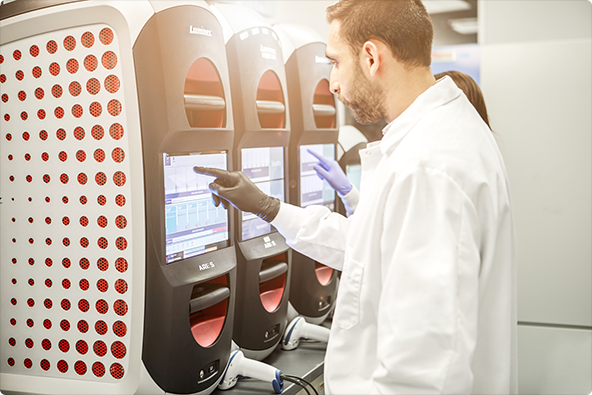Clinical lab scientist describes his experience establishing a two-step diagnostic algorithm for COVID-19

Scientists in clinical labs worldwide have worked night and day in the COVID-19 pandemic to develop, validate, and implement new diagnostic tests for patients believed to be infected by the SARS-CoV-2 virus. While each lab’s experiences are slightly different, there are certain universal themes. We spoke with Dr. Thomas Juretzek, a molecular biologist at the Carl-Thiem-Klinikum (CTK) Hospital in Cottbus, Germany, to learn about how he got an in-house screening assay up and running.
Juretzek used the Luminex ARIES® System to test for SARS-CoV-2, implementing it as part of a two-step diagnostic algorithm at the hospital. The CTK facility is the largest hospital in its state, with more than 1,200 beds. In addition to serving patients there, Juretzek’s lab also provides testing for more than 100 outpatient practices. His team typically runs more than 100,000 tests each year.
To support the CTK hospital and nearby hospitals during the pandemic, Juretzek knew that turnaround time would be one of the most important factors for any diagnostic test, along with excellent sensitivity and specificity. His team needed “a rapid diagnostic test that can provide accurate answers within hours instead of a day or even days,” he says.
The lab also needed robust capacity, since they were responsible for screening new patient admissions as well as employees. They also had to perform postmortem diagnostics to test for COVID-19. “Our laboratory wanted to develop a rapid, automated SARS-CoV-2 real-time RT-PCR assay as part of a two-step diagnostic algorithm—using an E gene assay as the first-line screening tool and an RdRp gene assay as the confirmatory test,” he says. They developed the E gene screening assay using the ARIES® System and the confirmatory RdRp gene assay on the Roche LightCycler® 480 II Instrument. “This approach allows rapid screening, ruling out non-infected patients, and identification of presumptive positive patients, of which the latter are then confirmed by a second assay,” Juretzek says.
According to Juretzek, the use of a screening assay is essential for triage and patient isolation. “It is the basis of effective hospital infection prevention and control measures,” he says. “We are using the E gene assay on ARIES® as the screening assay for emergency cases, off-hour patient samples, and for testing employees.”
Using the ARIES® System to generate results in less than two hours was an easy call. Juretzek and his team have been using the platform for two years now, often for samples that come in late in the workday or on weekends. They run it with assays for influenza, RSV, HSV 1 & 2, C. difficile, and norovirus. “Considering our experience with the sample-to-answer ARIES® System and its benefits—such as ease of use and rapid turnaround time—it was only logical to establish the SARS-CoV-2 testing on ARIES® as well,” he says.
Recently, Juretzek has validated the Luminex NxTAG® CoV Extended Panel, which was implemented in parallel to the NxTAG® Respiratory Pathogen Panel. This allows comprehensive testing for respiratory pathogens at CTK, which is particularly important for pediatric patients.
